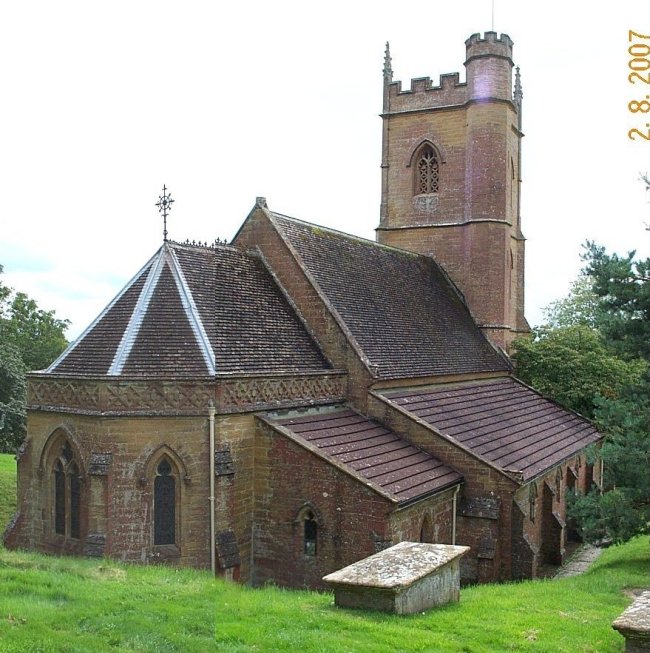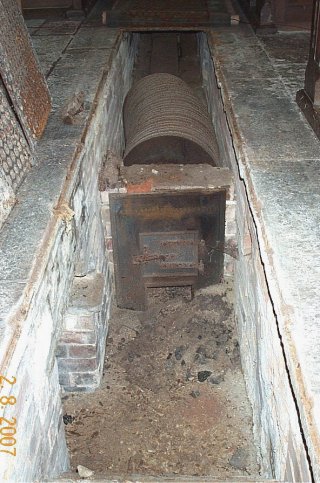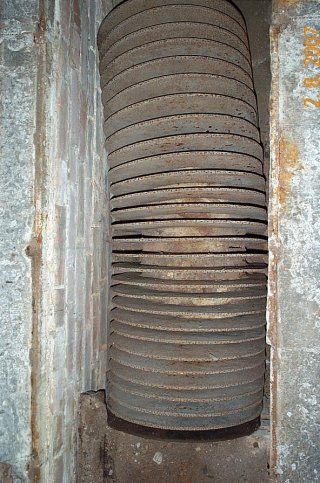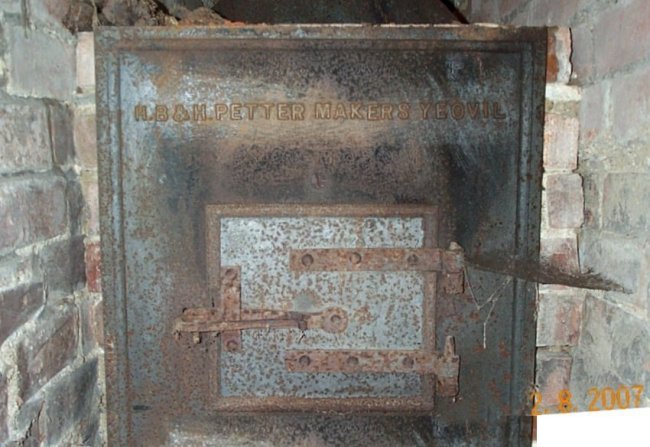
| St Andrew's Corton Denham Somerset |

| Set amongst the hills of
south Somerset the village of Corton Denham only
dates back to recent times of the 17th century. The village is dominated by its parish church set into the hillside, where there has been a church in that location since the 12th century, rebuilt in the late 17th century and remained so until it was completely demolished in 1869, as it had become too small to hold the congregation of the increasing population of the village. |
| The rebuilding of the
present church consecrated in 1870, was the most
likely time when a warm air heating system
was installed beneath the central aisle of the Nave. The stove which is installed in a long floor pit, is covered by many cast iron open pattern floor gratings which allowed the convected heat from the stove and its flue pipe to rise up into and warm the church. The stove was solid fuel fired by coal or coke and a storage area for the fuel was provided within the pit towards the front of the stove. Several stone steps were constructed leading down into the pit providing easy access for the stoker to enter the pit and fire the stove. |
| It would seem that during
the later part of the 19th century or early 20th
century the warm air heating system was not considered
sufficient to
provide adequate heating for the congregation or the
Rector, so another smaller size heating system was
installed in the Chancel area adjacent to the Vestry.
This took the form of a wet heating system with a bank
of large diameter cast iron pipes installed in another
floor pit covered with cast iron floor gratings. This
then provided additional heat to the Chancel area of
the church. The wet system had a
solid fuel boiler installed in the Vestry. This boiler
was removed during the 1980's. |
 |
 |
|
The construction of the
stove comprises a cast iron front plate complete
with a firing door and an ash clean out door set
into a single course of brickwork.
A square shaped cast iron back plate is attached to
the rear of the brickwork from which a long firing tube
extends for a distance of approx 2 metres, before it
connects to a rectangular shaped flue duct,
that is routed under more open pattern floor
gratings towards the Chancel end of the church.
Metal fins have been fixed to the firing
tube at about 80 mm spacings to greatly increase the
heat transfer surface area of the stove.
The space for storing the solid fuel can
be seen on the left of the floor pit in front of the
stove. The stove due to its rarity has now been
given a Grade II listing by English heritage.
|

The stove makers name HB & H PETTER YEOVIL is inscribed on the front plate.
This type of finned tube stove design is similar to the Gill stove arrangement
that had been in manufacture from the 1820's onwards and may have been
used by this local manufacturer.
AUGUST 2007

